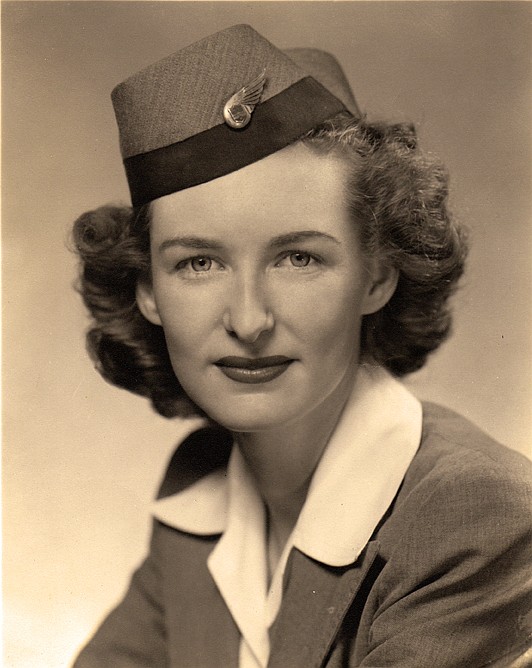Women in Aviation History
May 30, 2012 at 5:39 p.m.
The public feared flying when Betty Riley Stockard was hired by United as one of the first airline Stewardesses in 1942 shortly after Pearl Harbor. United employed pretty young women as Stewardesses on flights hoping the public would think if the young women were willing to fly, it must be safe. It worked.
To ensure the youthful image of the Stewardesses, there were restrictions: they must be between five feet two inches and five feet five inches tall, weigh less than one hundred twenty-five pounds, be twenty-one-years-old, single, and have no dependents. When they married, they must retire.
When Jean Fitchitt became a Northwest Stewardess in the early 1960s, the requirements were similar to Stockards’ with the addition of a signed statement that the Hostess would leave by age thirty-two.
In the 1940s Stockard was expected to dress in uniform; a light blue skirt, jacket, white blouse, and blue hat. In the 1960s, Fitchitt experienced a variety of uniforms: micro-minies, white serving jackets, Hawaiian mumus, and Japanese Kabuki jackets. After 1971 Fitchitt recalls the uniforms became more professional and classic-looking.
In 1942 Stockard’s title was Airline Hostess or Stewardess. Fitchitt recalls these titles remained until 1971when men started getting hired and the title changed to gender-neutral Cabin Attendants and then Flight Attendants.
In 1942, Stockard flew DC3s that carried 21 passengers and could fly from Seattle to Denver in five-and-a-half-hours, leaving her lots of time to visit each person and memorize their names. DC3s could not fly over turbulence but must fly through it making the cabin bounce and passengers get airsick.
From the 1970s, Fitchitt flew 747 jumbo jets that carried three to four hundred passengers, traveling coast-to-coast and internationally. Jumbo Jets could fly over or through turbulence with minimal bouncing. There was no time to memorize passenger’s names, except in First Class.
As for personal experiences, Stockard remembers a military group flying for the first time, how excited they were calling to each other to “look at this,” out the windows. They hit turbulence and the DC3 began bouncing. The men thought the plane was going to crash. She knew if one of the men got airsick they would all get sick. She stood in the bouncing plane explaining that this was normal for DC3s during a storm and that they weren’t going to crash. The men still looked afraid. Then one man from this all-black military group began to sing a spiritual. They all joined in. They sang for an hour until the storm stopped. Not one man got airsick.
Fitchitt encountered celebrities including Martin Luther King, but a highlight for her was flying the Minnesota Viking Football Player Charter. The Vikings were known as the Purple People Eaters with quarter back Fran Tarkington and players Karl Eller, Jim Marshall, Allen Page, and Gary Larsen. She flew with the players to all the games and got tickets to the home games.
Betty Stockard, Jean Fitchitt and Karleen Tetit, a current female airline pilot, will be speaking about their experiences in aviation history on June 19, 2012 from 7 to 9pm at the Des Moines Senior Center, 2045 S. 216th St. Suggested donation is $2. For information call 206-878-1642.
This article appeared in the June 2012 issue of Northwest Prime Time, the Puget Sound region’s monthly publication celebrating life after 50.





